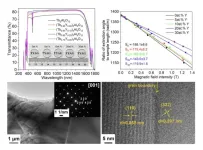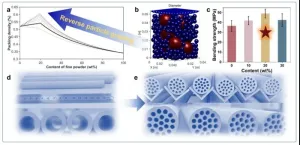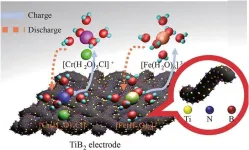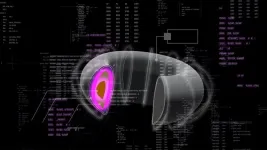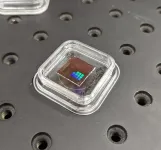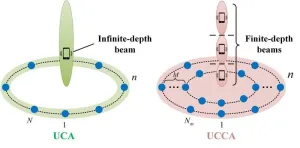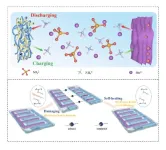A team of material scientists led by Jiang Li from Shanghai Institute of Ceramics, Chinese Academy of Sciences, in Shanghai, China recently reported (Tb1-xYx)3Al5O12 magneto-optical ceramics with high optical quality. The optical transmittance, microstructure, Verdet constant, and thermal conductivity of (Tb1-xYx)3Al5O12 with different Y content were investigated in detail. It was found that Y2O3 can suppress the secondary phase and improve the optical quality of TAG ceramics. As optical quality occupies one of the most important parts of the practical performance of magneto-optical ceramics, Y2O3 is considered to be a promising and effective additive.
The team published their research article in Journal of Advanced Ceramics on April 30, 2024.
In high-performance laser devices, Faraday isolators are one of the important components that can prevent the front-end system from disturbance and damage caused by a back-reflected beam. Magneto-optical materials are thus widely studied as they are key elements of Faraday isolators. Among magneto-optical materials applied in the visible to near-infrared wavelength band, TAG ceramics have been considered to be one of the most promising materials thanks to their high Verdet constant and good thermo-optic properties. However, the manufacturing process of TAG ceramics should be further optimized to reduce the optical loss and make them applicable for practical use. Optical scattering from the secondary phases is one of the most important problems for TAG ceramics, originated from the narrow solid-solution range.
Based on the existing problems and difficulties of TAG ceramics, the research team proposed their own solutions. “As Y3+ has a smaller ionic radius compared with Tb3+, anti-site defect can more easily form after Y substitution in TAG, which implies a possibility of increasing the solid-solution range, suppressing the secondary phases, and improving the optical quality of TAG ceramics,” said Jiang Li, senior author of the research paper, vice director of the Transparent Ceramics Research Center, Shanghai Institute of Ceramics, Chinese Academy of Sciences. Dr. Li is also a professor in Center of Materials Science and Optoelectronics Engineering, University of Chinese Academy of Sciences.
“In this work, Y2O3 was added in various amounts as an additive to investigate the mechanisms leading to improvement of the optical quality of TAG ceramics. (Tb1-xYx)3Al5O12 (x=0, 0.05, 0.1, 0.2, 0.3) ceramics were fabricated by solid-state reaction sintering. Vacuum sintering combined with hot isostatic pressing (HIP) post-treatment was conducted. The crystal structure, microstructure, optical transmittance, Verdet constant, and thermal properties for obtained ceramics were investigated in details,” Jiang Li said.
The result is that Y2O3 improves the optical transmittance of the ceramics by suppressing the secondary phase, probably due to the increase of solubility. “The (Tb0.8Y0.2)3Al5O12 ceramics possess the highest in-line transmittance value in this work, which is 82.9% at 1064 nm and 82.2% at 633 nm. The optical loss of the (Tb0.8Y0.2)3Al5O12 ceramics is nearly one order of magnitude lower than that of the obtained TAG ceramics in this work and in our previous works, showing that adding Y2O3 is a suitable method for improving the optical quality of TAG ceramics,” said Jiang Li.
The research team also found the side-effects caused by Y substitution. “Y2O3 additive reduces the Verdet constant of (Tb1-xYx)3Al5O12 ceramics as Y3+ substitutes Tb3+ thereby directly reducing the concentration of paramagnetic ions. And after adding 20at.% Y, the thermal conductivity of the TAG ceramics decreases by 9.4% in this work.” said Jiang Li.
After considering the factors comprehensively, the research team makes the assessment. Jiang Li said, “The optical loss directly affects the extinction ratio, insertion loss, change of beam quality, and many other performances for Faraday isolators, so it is one of the most concerned properties for magneto-optical ceramics. Therefore, Y2O3 can be preliminarily considered to be a promising and effective additive for improving quality of TAG ceramics for magneto-optical applications.” In the future, the research team will further reduce the optical loss coefficient and fabricate the (Tb1-xYx)3Al5O12 ceramics with larger aperture and thickness.
Other contributors include Lixuan Zhang, Dianjun Hu, Xiao Li, Ziyu Liu, Chen Hu, Lexiang Wu, and Tingsong Li from the Transparent Ceramics Research Center at Shanghai Institute of Ceramics, Chinese Academy of Sciences in Shanghai, China; and Dariusz Hreniak from the Institute of Low Temperature and Structure Research, Polish Academy of Sciences in Wroclaw, Poland.
This work was supported by the National Key R&D Program of China (Grant Nos. 2021YFE0104800 and 2023YFB3812000), the General Project of Shanghai Natural Science Foundation (Grant No. 22ZR1471500), the International Partnership Program of Chinese Academy of Sciences (Grant No. 121631KYSB20200039), the International Cooperation Project of Shanghai Science and Technology Commission (Grant No. 20520750200) and National Center for Research and Development (Contract No.WPC2/1/SCAPOL/2021).
About Journal of Advanced Ceramics
Journal of Advanced Ceramics (JAC) is an international journal that presents the state-of-the-art results of theoretical and experimental studies on the processing, structure, and properties of advanced ceramics and ceramic-based composites. JAC is Fully Open Access, monthly published by Tsinghua University Press on behalf of the State Key Laboratory of New Ceramics and Fine Processing (Tsinghua University) and the Advanced Ceramics Division of the Chinese Ceramic Society, and exclusively available via SciOpen. JAC has been indexed in SCIE (IF = 16.9, top 1/28, Q1), Scopus, and Ei Compendex.
About SciOpen
SciOpen is a professional open access resource for discovery of scientific and technical content published by the Tsinghua University Press and its publishing partners, providing the scholarly publishing community with innovative technology and market-leading capabilities. SciOpen provides end-to-end services across manuscript submission, peer review, content hosting, analytics, and identity management and expert advice to ensure each journal’s development by offering a range of options across all functions as Journal Layout, Production Services, Editorial Services, Marketing and Promotions, Online Functionality, etc. By digitalizing the publishing process, SciOpen widens the reach, deepens the impact, and accelerates the exchange of ideas.
END
